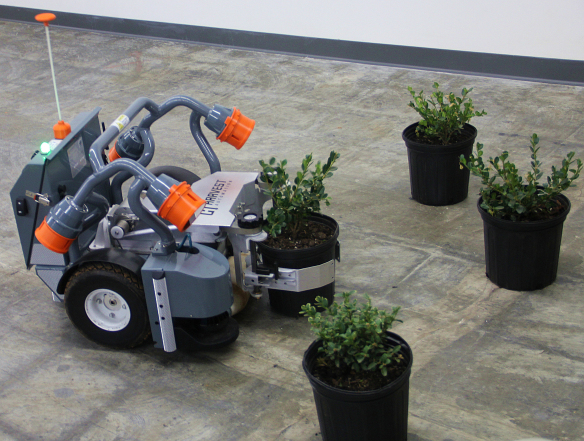Prototyping Harvest Automation’s HV-100 Robot for Agricultural Spacing

With population growth and an ever-increasing lack of access to water and arable land, future agricultural demands will require more efficient use of existing resources to increase crop yields. In an effort to reduce costs and increase efficiency, robots have been designed for various agricultural applications such as picking and weeding, but these robots have yet to find widespread acceptance in the marketplace due to technology and price barriers.
Now, one robot – Harvest Automation’s HV-100 robot, commonly nicknamed the Harvey – has found commercial success. This success is due in large part to the Harvey’s technological ease-of use and efficiency, as well as low cost of operation as compared to the high costs of labor.
An important step in ensuring the health of every plant is container spacing. Every container has to be evenly spaced as the plants grow so the plants do not intertwine and get damaged. While spacing is critical for the health of the plants, it is also one of the least desirable tasks on the farm. Moving and spacing plants is hard, tedious work.
The Harvey is capable of handling all plant spacing, consolidation and collection aspects of a nursery or greenhouse operation and uses established technology that is reliable, affordable and perfectly geared towards the task at hand. On those rare occasions when it becomes “confused,” the HV-100 also possesses failsafe algorithms that cause it to either stop or maneuver around unidentified objects. This feature, along with its diminutive size, makes it a safe addition to the workplace.
MITRPAK, a wholly-owned subsidiary of Lampin Corporation, an employee-owned precision machining company located in Uxbridge Massachusetts, manufactures a right angle gear drive that powers arms in the front of the robot to raise and lower the potted plants. This gear system also includes electronic sensors that keep the robot aware of its position.
Lampin/MITRPAK remains intimately involved with the design of the product. Harvest Automation initially engineered the part, and Lampin engineers made refinements after a prototyping process where the part went through multiple iterations before a final design was reached. Lampin added value by providing engineering expertise and by working with Harvest Automation on a program that combines high-quantity blanket orders with part cost reduction.
The right angle gear drive that powers the arms for the Harvey is just one of many components that makes up the HV-100 robot. Each part has been carefully engineered to increase productivity vis-a-vis plant spacing, consolidation and collecting plants, and the amount of intricate machining put into each component of the HV-100 robot is a testament to the engineering and innovative acumen of Harvest Automation and its partners.
As the cliche goes: “Build a better mousetrap and the world will beat a path to your door.”
